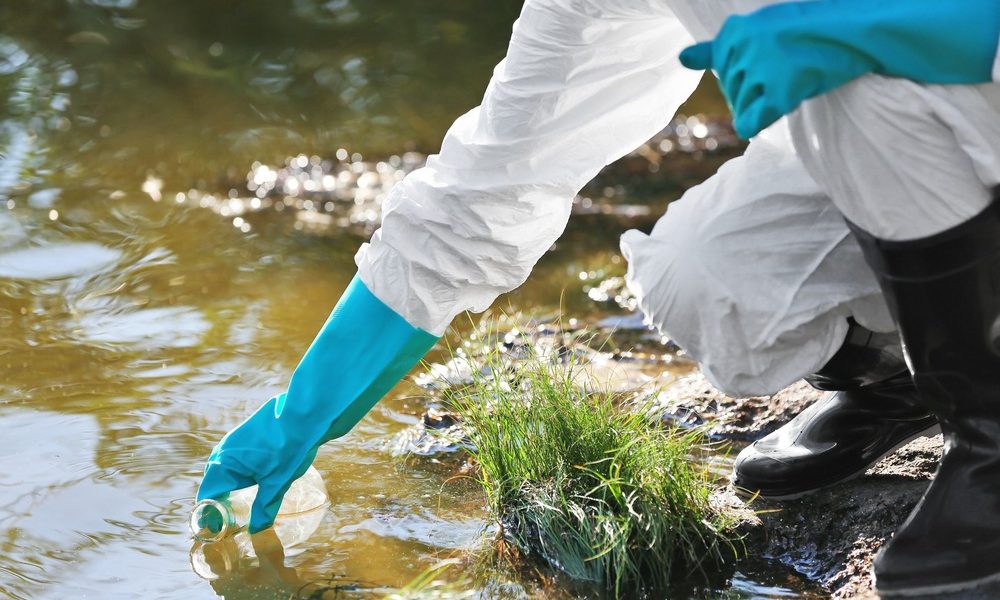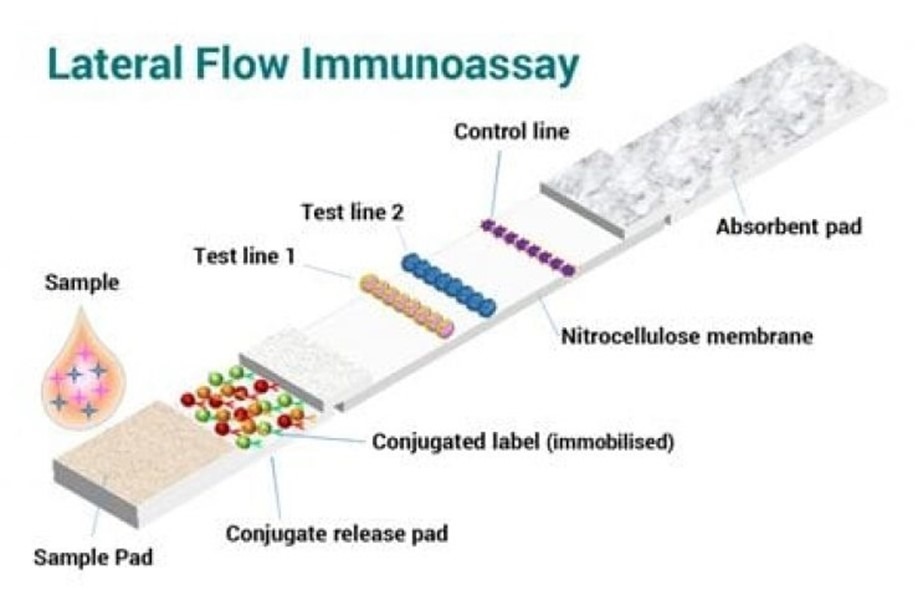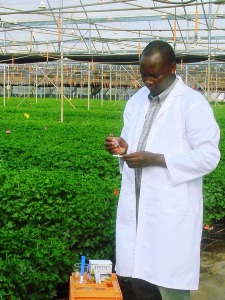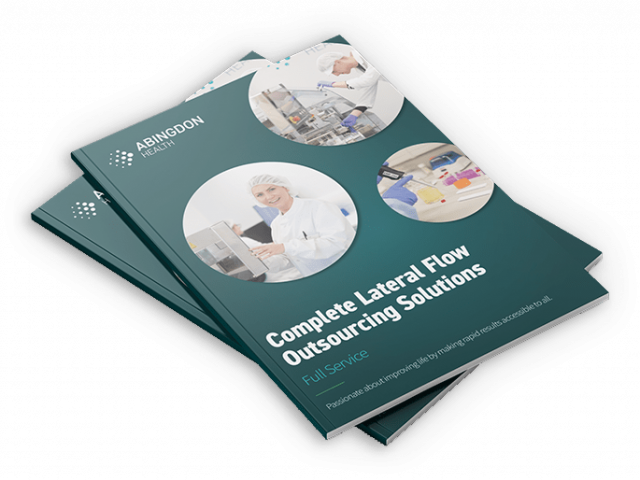Revolutionising Environmental Testing: The Role of Lateral Flow Technology

Understanding Lateral Flow Technology
Unlocking LFT Potential in Environmental Testing
Lateral Flow Technology Provides a Definite Edge
Challenges and Future Developments
Key Takeaways
Lateral flow tests play a pivotal role across a whole range of different sectors; and in this blog Abingdon Heath plc’s CEO Chris Yates takes a closer look at how lateral flow technology is revolutionising the environmental testing market.
In the ever-evolving landscape of environmental testing, the growing popularity and high accuracy of the technology means lateral flow has emerged as a game-changer. This innovative diagnostic approach – initially popularised in the medical field for rapid testing – has found its way into environmental testing, promising quicker and more accessible solutions for monitoring and analysing various parameters.
At Abingdon, we have applied our expertise in this area to successfully develop a number of environmental testing products, leveraging the capabilities of lateral flow to support the decentralisation of environmental testing – and we know this is just the beginning…
Understanding Lateral Flow Technology

Lateral flow assays, commonly known as strip tests or lateral flow tests, are simple devices designed to detect the presence or absence of a target analyte. The technology relies on sponge-like capillary action, where a liquid sample flows along a test strip via capillary forces. There is a very informative video on our website explaining in more detail how lateral flow technology works. The test strip typically consists of various zones, including a sample application pad, conjugate pad, test line, and control line. The technology is cost-effective, easy to understand and portable; and is, therefore, ideally suited to rapid testing in a diverse range of settings.
Unlocking LFT Potential in Environmental Testing
The flexibility of lateral flow testing means it is ideal for a growing variety of environmental testing applications; and the versatile potential of this testing method is being unlocked in a number of different areas as set out below.
LFT technology has been widely adopted for water quality testing. From detecting contaminants like heavy metals to identifying microbial contamination, these tests provide rapid, accurate on-site results. Users can obtain critical information about water quality and safety in real time, facilitating prompt decision-making in areas ranging from industrial settings to remote field locations.
One such example is lead testing: lead can enter drinking water when a chemical reaction occurs in plumbing materials that contain lead. Corrosion – the dissolving or wearing away of metal, for example from pipes and fixtures, particularly in lead pipework – is a major issue in certain territories. In the USA, the EPA has set the maximum contaminant level goal for lead in drinking water at zero, because lead is a toxic metal that can be harmful to human health even at low exposure levels.
Another application involves preventing Legionellosis: Abingdon provides manufacturing support to Hydrosense, a UK-based company, focussed on this important area of water quality monitoring. Hydrosense is a pioneer in the rapid water testing industry and have developed an on-site lateral flow testing method for detecting deadly Legionella bacteria in water and biofilm. Hydrosense’s product is used in a wide range of settings including shipping, cooling towers, hospitals and care homes, hotels and domestic homes.
Pesticides can contaminate soil, water, turf, and other vegetation. In addition to killing insects or weeds, pesticides can be toxic to a host of other organisms including birds, fish, beneficial insects, and non-target plants; and can significantly impact human health. In “lateral flow assay applied to pesticides detection: recent trends and progress” Lazo Jara et al provide a comprehensive review of the current use of LFAs in pesticide testing, highlight some areas for development and conclude that: “These [LFA] devices will allow the reliable monitoring of different matrices for detecting and quantifying pesticides, which is essential for quick decision-making and compliance with legislation.”
Some interesting developments in the use of LFT technology are outlined in Point-of-Care Strategies for Detection of Waterborne Pathogens, where Kumar et al highlight some interesting applications of innovative lateral flow technology, including the development of a 10-channel lateral flow device which allowed testing of different pathogens, including S. typhimurium, E. coli O157:H7, Vibrio cholera O1, V. cholera O139, V. parahaemolyticus, S. paratyphi A, S. paratyphi B, S. paratyphi C, S. choleraesuis, and S. enteritidis.
Soil analysis is another area of application for LFTs and is well established. For example, this comparison of field screening techniques with fuel-contaminated soil paper highlights the use of LFTs to test for petroleum in soil.

Finally, plant health continues to be an area of significant interest. Plant disease outbreaks pose severe risks to several areas including food security and these risks are exacerbated by climate change. An example of this impact is changing air and ground temperatures that can alter pathogen range and increase the spread of plant diseases in new areas. Lateral flow assays can play a key role in monitoring plant pathogen spread in biodiversity monitoring, by detecting specific biomarkers associated with different species. Abingdon Health has a strong heritage in plant pathogen detection and our Pocket Diagnostic® range of plant health tests is a great example of how lateral flow tests can help quickly identify diseases allowing expedited management decisions to protect crop health.
As an aside, being an active open water swimmer I am looking forward to the day when we can all test lake and river water for contaminants such as E.coli before we dive in! Whilst this will require a hybrid molecular / lateral flow approach, there are interesting developments happening (for example see Point-of-Care Lateral Flow Detection of Viable Escherichia coli O157:H) and there is significant potential to decentralise environmental testing and empower people to drive positive environmental change. Also, if this is an area of interest it is worth reading our blog on combining lateral flow and molecular technologies: Combining Molecular & Lateral Flow: A Game Changing Innovation?
Lateral Flow Technology Provides a Definite Edge
The use of lateral flow testing in these market segments is based on the strengths of lateral flow technology, including:
- Speed and Simplicity: One of the primary advantages of lateral flow technology is its rapidity. Results are typically obtained within minutes, allowing for swift decision-making. Additionally, the simplicity of the technology makes it accessible to users with varying levels of expertise, from field technicians to non-specialised personnel.
- Portability: LFTs are designed to be easy to transport or carry, making them ideal for on-site testing. This characteristic is particularly valuable in situations where sending samples to a centralised laboratory would be time-consuming or impractical.
- Cost-Effectiveness: Traditional laboratory testing can be expensive and time-consuming. Lateral flow technology offers an economical alternative, reducing the financial burden associated with environmental monitoring. This affordability extends the reach of testing capabilities to a broader range of applications and geographical locations.
- Customisation: The adaptability of lateral flow assays allows for development and modification to suit specific testing needs. Whether detecting pollutants, pathogens, or specific biomarkers, the technology can be tailored to address diverse environmental testing requirements.
Challenges and Future Developments
While lateral flow technology has proven highly effective, challenges remain. Sensitivity and specificity improvements, especially in comparison to laboratory-based methods, are areas of ongoing research. Enhancements in assay design; quality management processes; the incorporation of advanced materials; and the integration with other techniques (e.g. molecular) aim to address these concerns. For further in-depth information on design and verification processes, Abingdon Health’s online knowledge centre is packed full of useful articles: Blogs – Abingdon Health plc.
Aside from technical improvements to test design formats, looking ahead, the integration of lateral flow technology with data analytics, Internet of Things (IoT) and Artificial Intelligence (AI) platforms holds significant promise. Smart lateral flow devices capable of transmitting real time data to central databases could revolutionise how environmental monitoring is conducted, providing a more comprehensive, real-time, understanding of ecosystems and potential threats.
Key Takeaways
Lateral flow technology’s impact on the environmental testing market is promising and has the potential to be the start of a transformative shift toward more efficient, accessible, and cost-effective monitoring solutions. From ensuring water safety, assessing soil contamination to monitoring plant pathogen spread, lateral flow assays empower individuals and organisations to make informed decisions in real time. As technology continues to advance, the future of environmental testing appears to be increasingly intertwined with the versatility and convenience offered by lateral flow technology.
Abingdon Health’s team has over 20 years’ experience in the lateral flow market and is a knowledge leader in the scale-up, transfer, manufacturing and regulatory approval of lateral flow products across aa range of sectors including clinical (self-test, point of care), animal health, plant pathogen and environmental testing. Decades of experience in taking tests from concept to commercialisation has led to Abingdon Health establishing effective processes that ensures efficient and cost-effective development, technical transfer and scale-up. Abingdon adheres to Good Manufacturing Practice (GMP) to ensure tests are manufactured in a consistent and robust manner batch in, batch out. If you would like to discuss any specific requirements or concerns, don’t hesitate to contact Abingdon’s highly experienced team. Also, discuss our value-added services such as regulatory and commercial support that provides a de-risked and streamlined route to market.

